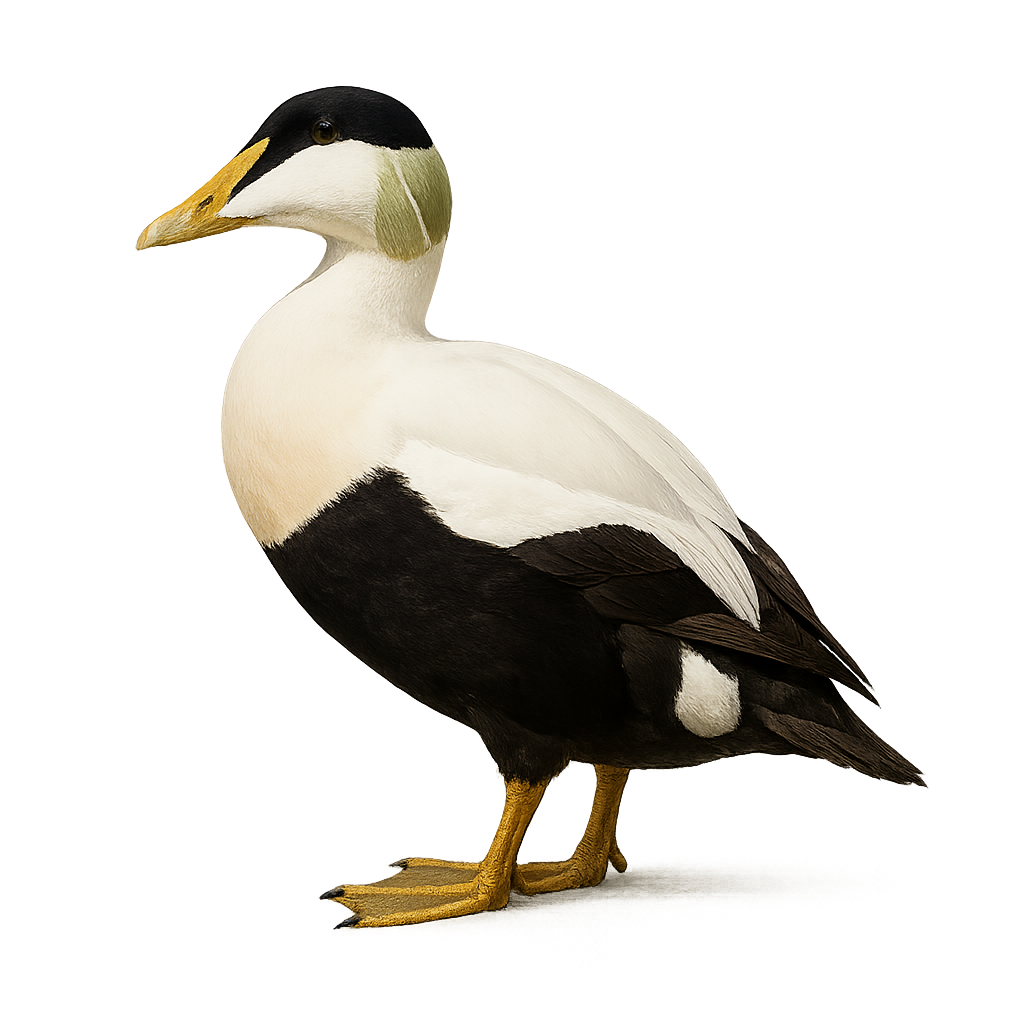Your wildlife photography guide.
Explore the common eider in detail, study its behavior, prepare your shots.
Where to observe and photograph the common eider in the wild
Learn where and when to spot the common eider in the wild, how to identify the species based on distinctive features, and what natural environments it inhabits. The WildlifePhotographer app offers tailored photography tips that reflect the common eider’s behavior, helping you capture better wildlife images. Explore the full species profile for key information including description, habitat, active periods, and approach techniques.
Common eider
Scientific name: Somateria mollissima

IUCN Status: Least Concern
Family: ANATIDAE
Group: Birds
Sensitivity to human approach: Suspicious
Minimum approach distance: 30 m
Courtship display: April to May
Incubation: 25–28 jours
Hatchings: May to June
Habitat:
Coastal shores, islands, lagoons, and shallow waters of the North Atlantic, in Europe, North America, and Scandinavia
Activity period :
Primarily active during the day, with peak activity in the morning and late afternoon.
Identification and description:
The Eider Duck is a large sea duck, easily recognized by its distinctive plumage. The adult male has a white body with a black head and neck, while the female is more muted with a brown speckled plumage. The Eider measures about 55 to 70 cm in length, with a wingspan of 100 to 125 cm, and weighs between 1.5 and 2.5 kg. It is primarily found in coastal regions of the North Atlantic, notably in Northern Europe, Canada, and Alaska. This duck primarily feeds on mollusks, crustaceans, and small fish, which it finds by diving underwater. It is also known for its social behavior, often living in large colonies during the breeding season. The Eider Duck is particularly famous for its down, a soft and insulating material harvested from the female's nests after laying, used to make luxury duvets and pillows. While the species is not immediately endangered, it is threatened by marine pollution, habitat loss due to coastal urbanization, and hunting.
Recommended lens:
200 mm – adjust based on distance, desired framing (portrait or habitat), and approach conditions.
Photography tips:
To photograph the common eider, a telephoto lens is ideal for capturing its movements on the water or while resting on beaches, rocks, or coastal areas. Soft morning or evening light is perfect for sharp photos that highlight the contrast of its plumage and rounded shape.
Be discreet and respect their space, especially during the breeding season, when females nest on the ground and are particularly sensitive to disturbance. Avoid direct approaches and favor distant observation to preserve their peace.
The common eider is classified as Least Concern by the IUCN, but it is vulnerable to habitat loss, human disturbance, and marine pollution. It is essential to respect its coastal environment and minimize any form of disruption.
The WildlifePhotographer App is coming soon!
Be the first to explore the best nature spots, track rutting seasons, log your observations, and observe more wildlife.
Already 1 432 wildlife lovers subscribed worldwide

